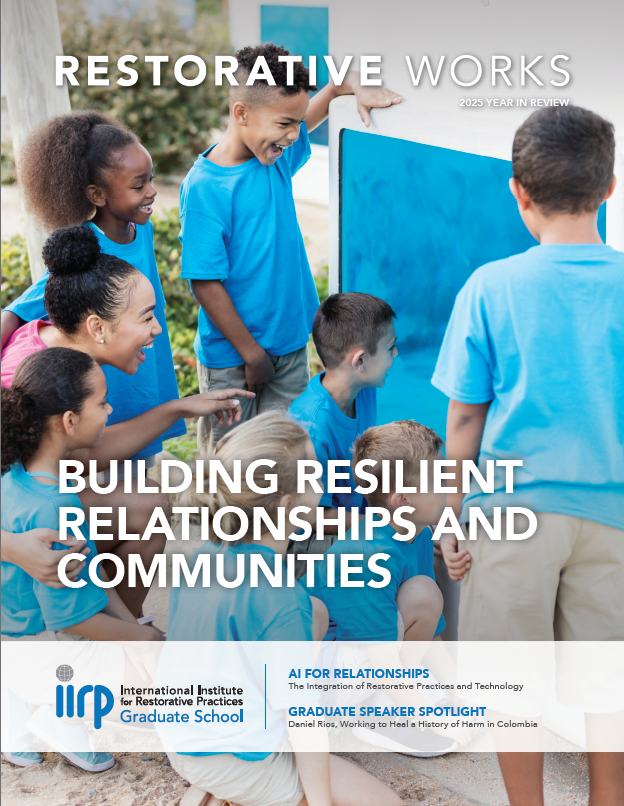News & Announcements
Paper by Vidia Negrea, presented in a plenary session at "Improving Citizenship & Restoring Community," the IIRP''s 10th International Institute for Restorative Practices World Conference, November 7-9, 2007, Budapest, Hungary.
Paper by Mária Herczog, presented in a plenary session at "Improving Citizenship & Restoring Community," the IIRP''s 10th International Institute for Restorative Practices World Conference, November 7-9, 2007, Budapest, Hungary.
Paper by Erzsébet Hatvani, presented in a plenary session at "Improving Citizenship & Restoring Community," the IIRP''s 10th International Institute for Restorative Practices World Conference, November 7-9, 2007, Budapest, Hungary.
Paper by Ted Wachtel, presented in a plenary session at "Improving Citizenship & Restoring Community," the IIRP''s 10th International Institute for Restorative Practices World Conference, November 7-9, 2007, Budapest, Hungary.
Paper by Terry O''Connell, presented in a plenary session at "Improving Citizenship & Restoring Community," the IIRP''s 10th International Institute for Restorative Practices World Conference, November 7-9, 2007, Budapest, Hungary.
Paper by Paul McCold, presented in a plenary session at "Improving Citizenship & Restoring Community," the IIRP''s 10th International Institute for Restorative Practices World Conference, November 7-9, 2007, Budapest, Hungary.
Paper by Robert van Pagée, presented in a plenary session at "Improving Citizenship & Restoring Community," the IIRP''s 10th International Institute for Restorative Practices World Conference, November 7-9, 2007, Budapest, Hungary.
Paper by Bruce Schenk, presented in a plenary session at "Improving Citizenship & Restoring Community," the IIRP''s 10th International Institute for Restorative Practices World Conference, November 7-9, 2007, Budapest, Hungary.
Paper by Gyöngyvér Magyar, presented in a plenary session at "Improving Citizenship & Restoring Community," the IIRP''s 10th International Institute for Restorative Practices World Conference, November 7-9, 2007, Budapest, Hungary.
Paper by Mária Kerényi, presented in a plenary session at "Improving Citizenship & Restoring Community," the IIRP's 10th International Institute for Restorative Practices World Conference, November 7-9, 2007, Budapest, Hungary.
